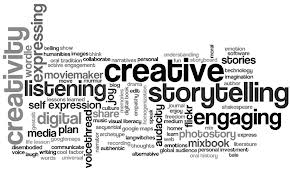What is Digital Storytelling? How can researchers working with communities use it?

We spoke to Roz Dibley about how she came to use it, what it is, and the benefits of utilising it in evaluation.
Can you tell us what Digital Storytelling is?
It is about using the tools that we have available through technology to tell stories. It started with the Centre for Digital Storytelling (US) as a way to tell personal stories using technological skills and technological means.
Digital Storytelling is an emerging method in many disciplines. It was started as a means for social change and has grown in popularity, particularly in the education sector.
The use of digital stories as a learning medium in schools and other areas is valued because of its ability to empower people to be involved in telling their own stories.
Since [technology became more user friendly] it’s a lot easier and a lot more people are doing it now. It’s a credible research and evaluation tool being used all over the world.
The Centre for Digital Storytelling does workshops with people with mental health issues, those affected by family violence, in South Africa they’ve done a lot with people with AIDs. It is still the same; their stories are being told through the help of this organisation. It comes from a very activist-basis that these people’s stories weren’t being heard in the mainstream media.
The whole concept that everyone has a story to tell, it’s grown from that. It is giving the people an opportunity to use a narrative technique/narrative methodology to feedback the research.
What are the benefits of utilising Digital Storytelling in research?
Digital Stories are a collaborative enterprise that could work well in many different settings. Researchers may want to use them if they intend to work closely with participants and share skills with them, for example young people involved in an after-school computer clubhouse where the process of the research increases the skills of the participants.
Researchers might want to use another methodology in association with digital stories. An inspiring example is ‘stories of hope and resilience’ [this project] is using storytelling and new media to facilitate wellness in indigenous communities. The project was a partnership between the Elders of the Hopevale community of North Queensland, Pelican Expeditions and the State Library of Queensland.
Digital stories could be used as a method to ensure whānau have the collective capacity and strength to pursue their aspirations. They can be used alongside other methods such as the PATH tool used by Kataraina [Pipi].
For researchers, it’s about the importance of relationships – you don’t just go in there, get the data and leave – as has been the case in the past. You have to build relationships with individuals and give them opportunities to tell stories.
If you follow the Centre for Digital Storytelling model, it’s about sharing stories. It focuses on the relationships between the people involved in the story.
How would a researcher go about using Digital Storytelling in their work?
For a start, the use of stories in research is part of a dialogue about the need for involvement of all stakeholders. Methodologies that include stories and narratives, of which Digital Storytelling is one, are a key part of this shift towards involving all stakeholders.
The use of digital stories as part of a research project can differ considerably, from a model where research participants make digital stories as part of the project through to the researchers using digital stories to feedback research findings.
How might community researchers learn about using this method?
There are many resources available on the web. And I am working to put together links to them. What I aim to do with Community Research is to have all these resources available [on the website], showing samples, what can be done. There are many resources out there but it is a matter of putting them in one place.
There is an organisation in the States called TechSoup, they run a Digital Storytelling competition every year and as part of that, they do webinars to show people how to tell stories.
You have done some further study around Digital Storytelling, can you tell us about this?
I recently completed a paper through the University of Colorado, which has the Certificate in Digital Storytelling.
The paper I completed, Exploring Culture through Digital Storytelling, examined a range of theories, experiences, discourses, and ethnographic digital media practices among different societies, individuals, and ourselves.
As part of this, the Centre for Digital Storytelling undertakes workshops around the course, I looked at the links between digital storytelling and indigenous research practices. I found it informative to see the links between kaupapa Māori and indigenous research practices.
Resources for Digital Storytelling:
Roz’s paper on the Community Research site: Using Digital Media to Report Back Information Rich Research and Evaluation Results
Roz’s video ‘Exploring Culture through Digital Storytelling’: Click here to see
For the Centre for Digital Storytelling website: Click here
For TechSoup’s Digital Storytelling competitions: Click here
Roz Dibley has a degree in Social Science research (MA Applied) at Victoria University. She has worked with Te Puni Kōkiri, and has project-managed a refugee research project which led her to further develop her cross-cultural research skills. She has worked in Government departments, in research and evaluation, and has worked alongside groups who use kaupapa Māori research and wider cross-cultural research.

